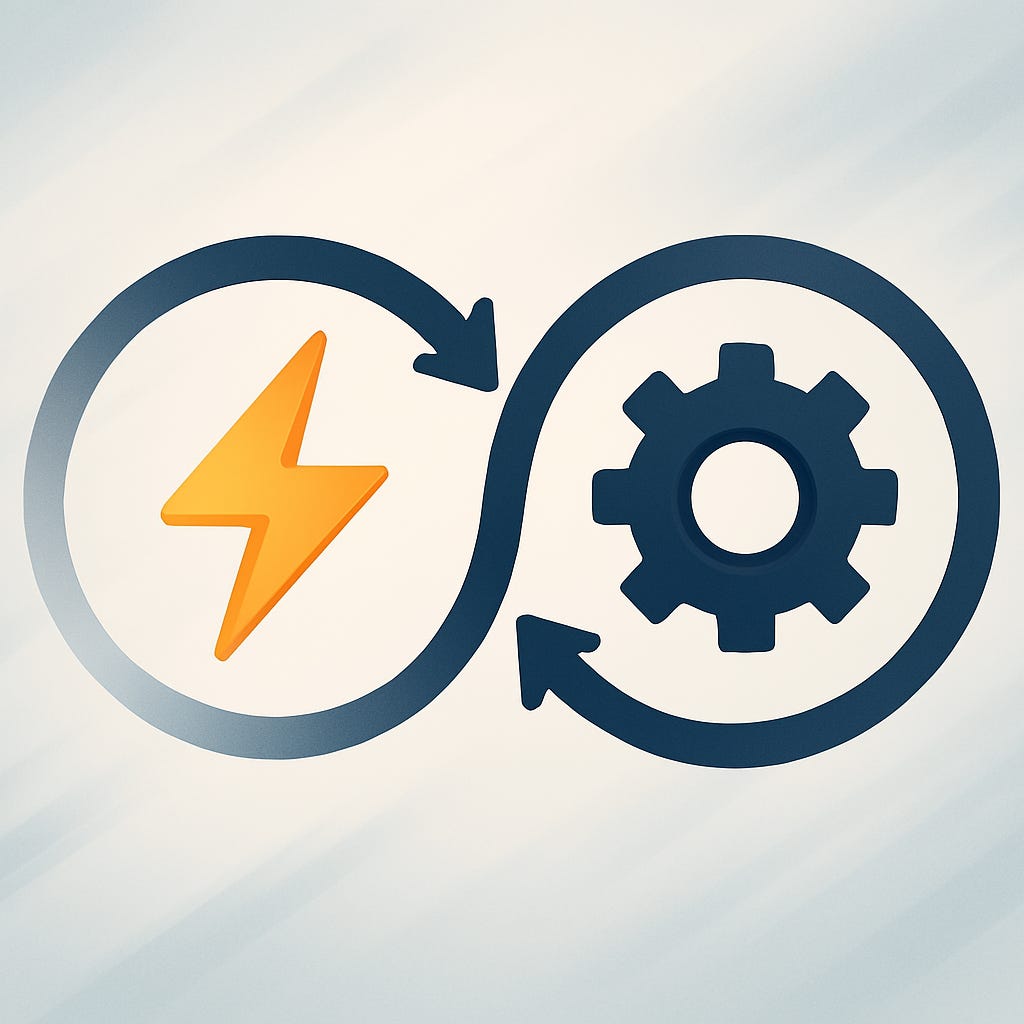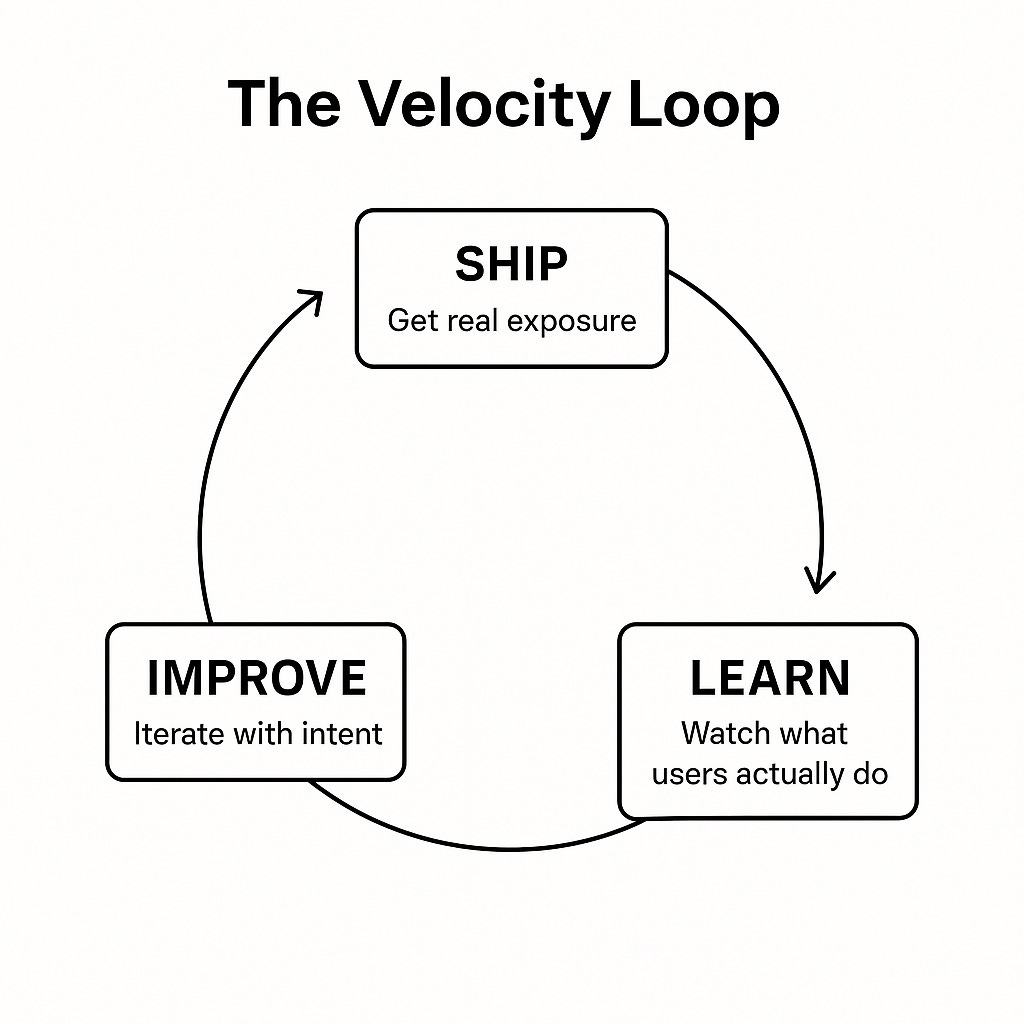Speed vs. Quality Isn’t a Tradeoff - It’s a Feedback Loop
How high-performing product teams move fast, learn faster, and still deliver quality
🎧 Now a Podcast Conversation
This essay sparked a thoughtful dialogue on The Product Leader’s Playbook, where two AI hosts explore the strategy behind the ideas in conversation, not narration.
→ Listen on Spotify | Apple Podcasts
A few years ago, I was managing a cross-functional team gearing up for a major feature launch. Design was still tweaking edge cases. QA was hesitant about a few test scenarios. And our VP wanted “one more demo” before giving the green light.
We were already two sprints behind schedule.
So I made the call: Ship it to 5% of users.
We used a feature flag, scoped the release, and braced ourselves. Within 48 hours, we had feedback that completely changed the next iteration. And that VP? Suddenly, they weren’t asking for perfection, they were asking how quickly we could expand the test.
That moment reshaped how I think about product velocity.
Then I led a team with a steady biweekly release cadence - six weeks, three focused launches, and clear value delivered each time.
The result? Higher NPS, fewer surprises, and a noticeable shift in stakeholder trust.
That’s when I learned:
Speed and quality aren’t at odds. In high-performing product cultures, they reinforce each other.
🚀 The Myth of Speed vs. Quality
When I coach product managers, I often hear variations of the same concern:
“We can’t move fast because we’re holding a high bar for quality.”
“We can’t cut corners - our space is too regulated / sensitive / high stakes.”
“We’ll ship when it’s right.”
These aren’t excuses - they’re often genuine concerns. But they point to a deeper misconception.
Here’s the pattern I see play out:
The Myth
Speed = sloppy
Quality = perfection
Shipping fast is risky
The Reality
Speed = faster feedback
Quality = relevance, resilience, and responsiveness
Not shipping is riskier
You don’t build trust by waiting. You build trust by listening, responding, and evolving. Fast.
🔁 Introducing: The Velocity Loop
High-performing product teams don’t just move fast, they move in loops.
They optimize for one thing above all: the time between idea and insight.
The Velocity Loop has three parts:
Ship — Put something in the world, however small.
Learn — Watch behavior, capture signals, listen to customers.
Improve — Iterate based on evidence, not opinion.
The faster you move through the loop, the more:
Confident your roadmap becomes
Resilient your product is
Aligned your team stays
Speed and quality aren’t separate goals, they’re both outputs of a healthy loop.
🎛 Feature Flags: Control Speed Without Sacrificing Quality
Feature flags are more than just a safety net, they’re a strategic tool for confidence and control.
At a recent company, we used them not just for rollback protection, but to test pricing models, new flows, and even onboarding experiments - without needing separate environments or messy user segmentation.
Here’s what it unlocked:
We could ship code without showing it, separating deployment from launch.
PMs could target features by region, user cohort, or behavior, and watch impact in real time.
If something underperformed or broke, we rolled it back instantly, no hotfixes needed.
It changed the way teams thought about launches: not as a scary “go live” event, but as a controlled conversation with our users.
Speed didn’t mean rushing, it meant staying close to feedback while maintaining control.
⏳ The Real Risk: Moving Too Slowly
I’ve been on teams that waited six months to launch a major feature.
When it finally went live, users were confused, the market had shifted, and half the value had eroded.
It wasn’t poor execution.
It was poor timing caused by a lack of feedback earlier in the process.
The real cost of “perfect before launch” isn’t just time. It’s:
Missed market signals
Over-investment in the wrong bets
Delayed learning and morale drag
Every day you don’t ship, you delay the insight that could reshape your strategy.
📦 Why Small, Frequent Releases Win
Want to spot high-performing product orgs?
Look at their release cadence. The best teams:
Ship small, meaningful updates often
Learn quickly from user signals
Fix issues fast, while confidence is still high
Course-correct before waste builds up
What they avoid:
Long, monolithic launches
Delayed validation cycles
“Big reveal” product drops that fall flat
If you're afraid of breaking things, build a system that lets you break them small, and early.
🎯 Redefining Quality for Modern Teams
Most teams define quality like it’s a static output:
No bugs
Meets requirements
Looks good
But real quality is about how well your product adapts to real-world conditions.
Quality is not what you build. Quality is what survives contact with the customer.
This is why the best product teams don’t wait for confidence, they ship to create it.
🧭 Leading with Speed and Confidence
Here’s how I’ve seen leaders shift their orgs:
Make learning a first-class metric
Invest in the plumbing — feature management, beta programs, real-time analytics
Reward iterative momentum — don’t wait for big launches to celebrate
Kill “perfect” as the goal — focus on progress and signal instead
🧵 Final Thought: The Loop That Powers Outcomes
You don’t earn speed and quality overnight.
You build a system through culture, tooling, and mindset that lets you do both.
Speed fuels learning.
Learning improves quality.
Quality drives outcomes.
And outcomes create the space and trust to move faster.
The loop feeds itself.
🎧 Want to Go Deeper?
This article sparked a full conversation on The Product Leader’s Playbook - a podcast where two AI hosts thoughtfully unpack the strategy, trade-offs, and leadership moves behind each essay.
💬 Share Your Experience
How are you helping your team move faster without sacrificing quality?
What feedback systems have worked best in your org?
Reply and let me know, or forward this to a product leader who needs to hear it.



